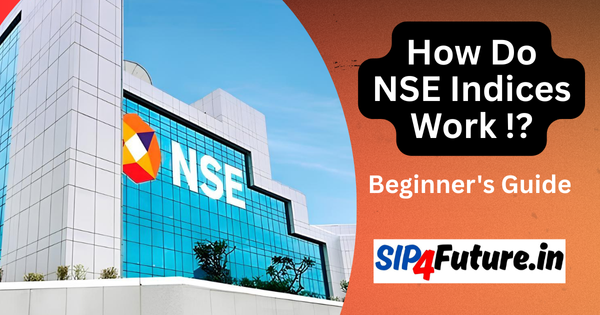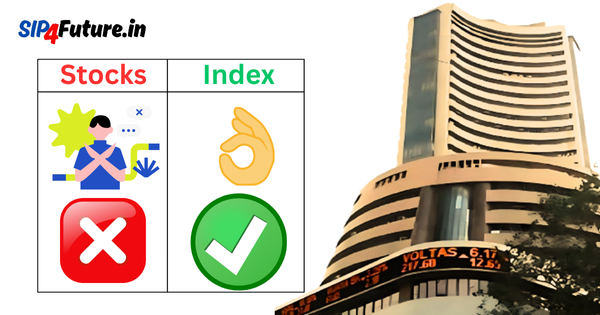The NIFTY 50 index, a cornerstone of India’s financial landscape, reflects the performance of the top 50 companies listed on the National Stock Exchange (NSE). The influence of the top 5 NSE companies on this index is profound, shaping not only market trends but also the broader Indian economy. These industry giants, spanning critical sectors like finance, IT, and energy, wield significant weight in the NIFTY 50, which accounts for about 55.48% of the NSE’s free-float market capitalization as of March 2025. This article delves into their impact, the mechanisms behind their influence, the government’s role, and the sectors they dominate, blending provided data with real-time insights.
What Drives the NIFTY 50’s Importance in India?
The NIFTY 50, launched on April 22, 1996, by NSE Indices, serves as a benchmark for India’s equity market, representing 13 diverse sectors. With a base value of 1,000 set on November 3, 1995, it captures approximately 65% of the NSE’s float-adjusted market capitalization, making it a reliable indicator of market health. Its free-float market capitalization methodology, adopted in 2009, ensures that only publicly tradable shares influence the index, enhancing its accuracy.
As of April 2025, the index stands at 24,246.7, reflecting a slight 0.3% decline, influenced by both domestic and global economic factors. The top 5 NSE companies—Reliance Industries, HDFC Bank, ICICI Bank, Infosys, and Tata Consultancy Services (TCS)—play a pivotal role in this dynamic, collectively shaping market sentiment and economic growth.
Who Are the Top 5 NSE Companies?
The top 5 NSE companies are titans in their respective sectors, contributing significantly to the NIFTY 50’s movements. Below is a table summarizing their key metrics as of March 2025, based on market capitalization and index weightage:
| Company | Sector | Market Cap (₹ Cr) | NIFTY 50 Weightage (%) | Recent Stock Price (₹) |
|---|---|---|---|---|
| Reliance Industries | Oil & Gas, Telecom | 1,755,000 | 10.5 | 1,300.40 |
| HDFC Bank | Financial Services | 1,450,000 | 8.9 | 1,911.20 |
| ICICI Bank | Financial Services | 985,000 | 7.2 | 1,404.80 |
| Infosys | Information Technology | 615,000 | 5.8 | 1,480.20 |
| TCS | Information Technology | 1,250,000 | 5.2 | 3,448.00 |
Reliance Industries: The Diversified Giant
Reliance Industries, led by Mukesh Ambani, dominates with its sprawling operations in oil and gas, telecom (Jio), and retail. Its 10.5% weightage in the NIFTY 50 makes it the index’s heaviest hitter. Recent initiatives, like Jio’s 5G rollout, have bolstered India’s digital economy, creating jobs and enhancing connectivity.
HDFC Bank and ICICI Bank: Financial Powerhouses
HDFC Bank and ICICI Bank anchor the financial services sector, which holds a 32.76% weight in the NIFTY 50. HDFC Bank’s robust retail banking and digital innovations, alongside ICICI’s corporate lending strength, stabilize the index during volatile periods. Their combined weightage of 16.1% underscores their influence on market stability.
Infosys and TCS: IT Trailblazers
Infosys and TCS, with a combined 11% weightage, drive the IT sector’s 13.76% contribution to the NIFTY 50. These firms fuel India’s reputation as a global IT hub, with TCS reporting a 19.72% net profit increase for Q1 2025. Their global contracts and innovation in AI enhance India’s export economy.
How Do These Companies Impact the NIFTY 50 Index?
The top 5 NSE companies influence the NIFTY 50 through their market capitalization and stock price movements. The index’s free-float methodology means that price changes in high-weightage stocks like Reliance or HDFC Bank have a disproportionate effect. For instance, a 1% rise in Reliance’s stock price can lift the NIFTY 50 by approximately 10.5 points, given its 10.5% weightage.
Mechanism of Influence
The NIFTY 50 is calculated using the formula:
Index Value = (Current Market Value / Base Market Capital) × 1000
Here, the market value reflects the free-float capitalization of the 50 constituents. Stocks with higher weightage, like the top 5, amplify the index’s movements. For example, on April 25, 2025, IndusInd Bank’s 3.2% gain contributed positively, while Hindustan Unilever’s 4% drop dragged the index down.
Real-Time Market Dynamics
As of April 27, 2025, the NIFTY 50’s daily range was 23,847.85–24,365.45, reflecting volatility driven by geopolitical tensions and corporate earnings. Reliance’s marginal 0.09% dip contrasted with TCS’s 1.36% gain, illustrating how these companies’ performances balance the index. Real-time data from
confirms that financial services and IT stocks remain pivotal in stabilizing the index during bearish phases.
What Is Their Broader Impact on the Indian Economy?
Beyond the NIFTY 50, these companies shape India’s economic landscape through job creation, innovation, and sectoral growth. Their influence spans multiple dimensions:
Economic Contributions
- Reliance Industries: Its ₹1.75 trillion market cap supports India’s energy security and digital inclusion. Jio’s affordable data plans have driven internet penetration, boosting e-commerce and digital payments.
- HDFC Bank and ICICI Bank: These banks facilitate credit access, with HDFC Bank’s loan book growing 30.38% in Q1 2025. Their financial inclusion initiatives align with India’s goal of a $5 trillion economy by 2027.
- Infosys and TCS: Employing over 1 million professionals, these IT giants contribute to India’s $150 billion IT export market. Their R&D investments foster innovation, positioning India as a tech leader.
Sectoral Dominance
The top 5 NSE companies cover three critical sectors:
- Financial Services (32.76%): Drives credit availability and market liquidity.
- Information Technology (13.76%): Fuels export revenues and digital transformation.
- Oil and Gas (12.12%): Ensures energy stability and industrial growth.
These sectors collectively account for over 58% of the NIFTY 50’s weight, underscoring their economic significance.
Table: Sectoral Contributions to Economy
| Sector | Key Companies | Economic Role | Contribution to GDP (%) |
|---|---|---|---|
| Financial Services | HDFC Bank, ICICI Bank | Credit access, financial inclusion | 7.5 |
| Information Technology | Infosys, TCS | IT exports, job creation | 8.0 |
| Oil and Gas | Reliance Industries | Energy security, industrial growth | 5.0 |
GDP contributions estimated based on sectoral data from RBI and Ministry of Finance, 2025.
How Does the Government Support These Companies?
The Indian government plays a proactive role in fostering the growth of NSE’s top companies, recognizing their contribution to economic development. Its policies and action plans align with the goal of making India a global economic powerhouse.
Policy Initiatives
- Digital India: Launched in 2015, this initiative has bolstered Reliance’s Jio and IT firms like Infosys and TCS by promoting digital infrastructure. The government’s ₹1.13 lakh crore allocation for telecom in Budget 2025 supports 5G expansion.
- Make in India: This program encourages manufacturing and energy investments, benefiting Reliance’s refining and petrochemical businesses. Tax incentives for green energy projects have spurred Reliance’s renewable energy ventures.
- Banking Reforms: The RBI’s recapitalization of public sector banks and merger policies have strengthened private banks like HDFC and ICICI, enhancing their lending capacity.
Action Plans
The government’s action plan for 2025–2030 emphasizes:
- Financial Inclusion: Programs like Jan Dhan Yojana, supported by HDFC and ICICI, have opened over 50 crore bank accounts, integrating rural economies.
- Atmanirbhar Bharat: Encourages self-reliance in IT and energy, aligning with TCS’s AI innovations and Reliance’s solar energy projects.
- SEBI Regulations: The Securities and Exchange Board of India (SEBI) ensures transparency in NSE trading, protecting investors and stabilizing the NIFTY 50.
Government’s Focus
The government prioritizes sectors dominated by these companies, with a focus on:
- Digital Economy: Targeting a $1 trillion digital economy by 2030, driven by IT and telecom.
- Energy Transition: Aiming for 500 GW renewable capacity by 2030, supporting Reliance’s green initiatives.
- Financial Stability: Strengthening banking through stricter NPA norms and digital payment systems.
When Do These Companies Influence the Economy Most?
The top 5 NSE companies exert maximum influence during specific economic cycles and events:
- Bull Markets: During optimistic phases, like the NIFTY 50’s rally to 26,277.35 in 2024, these companies attract heavy investment, boosting market sentiment.
- Earnings Seasons: Quarterly results, such as TCS’s 19.72% profit growth in Q1 2025, drive index spikes.
- Policy Announcements: Budgetary allocations or RBI rate cuts amplify banking and IT stocks, as seen in HDFC Bank’s loan growth post-2025 budget.
- Global Crises: During events like the 2008 financial crisis, these companies’ resilience stabilized the NIFTY 50, with IT firms gaining from global outsourcing.
What Challenges Do They Face?
Despite their dominance, these companies face hurdles that impact their NIFTY 50 contributions:
- Geopolitical Tensions: Escalating global conflicts, as noted on April 25, 2025, led to a sharp market dip, affecting Reliance and banking stocks.
- Regulatory Scrutiny: SEBI’s oversight and NSE’s defamation disputes highlight governance challenges.
- Market Volatility: Bearish phases, driven by global trends, can erode gains, as seen in the NIFTY 50’s 0.3% drop in April 2025.
How Can Investors Leverage Their Influence?
Investors can capitalize on the top 5 NSE companies’ impact through:
- Index Funds: Investing in NIFTY 50 ETFs mirrors the performance of these giants.
- Derivatives: NIFTY 50 futures and options, traded on NSE and GIFT NIFTY, offer hedging opportunities.
- Stock Picking: Direct investment in Reliance, HDFC, or TCS provides exposure to high-growth sectors.
For real-time insights, platforms like Moneycontrol and BSE India offer detailed stock analysis and market trends.
Conclusion: A Bright Future Ahead
The top 5 NSE companies—Reliance Industries, HDFC Bank, ICICI Bank, Infosys, and TCS—are the backbone of the NIFTY 50 and India’s economy. Their dominance in finance, IT, and energy sectors, coupled with government support, ensures their continued influence. As India aims for a $5 trillion economy, these companies will drive innovation, job creation, and market stability. By understanding their mechanisms and leveraging real-time data, investors and policymakers can harness their potential for sustainable growth.




